Chinese Batik
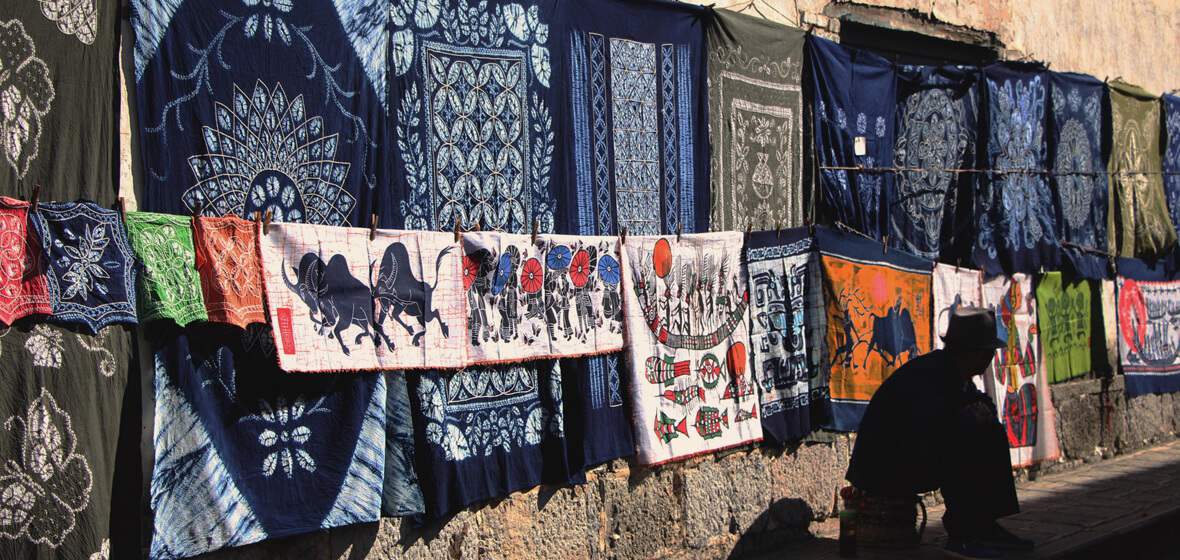
The art of batik has been known for centuries, but its origin, probably thousands of years ago, is still obscure. Archeological evidence of the use of batik cloth has been found in China, Egypt, Persia, India, Japan, Indonesia, and other parts of Southeast Asia.
The word batik originates from Javanese word amba, meaning “to write,” and the Javanese word for dot or point, titik. It is called “la ran” (wax dye) in China. Batik is one of the four textile dyeing techniques in China; the other three are stencil dyeing, clamp dyeing, and tie dyeing. The history of batik in China extends back more than two thousand years. The tradition of batik is still prevalent among ethnic groups, such as the Miao, Gejia, and Buyi in southwestern China. The art was handed down from generation to generation and was usually an occupation of village women.
What is Batik?
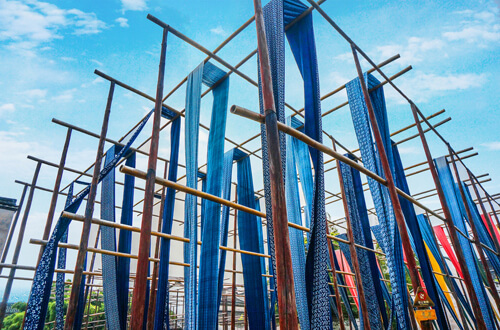
Batik is a technique of wax-resist dyeing applied to whole cloth, or cloth made using this technique. The wax is used to create patterns on the fabric and is removed after the dyeing process. While a simple batik can be made by using only one dye color, the usual number is two or three. Some batik artists use up to 20 separate waxing and dyeing steps to achieve highly intricate designs. For Miao people in China, most batik fabric materials are blue and white, because they use indigo as dye. Indigo is a color that can be dyed in cold water while most other colors, such as red and yellow, can be dyed only in hot water, in which case the wax would melt right away before the fabrics are dyed.
What Do You Need to Make Chinese Batik?
Fabrics
Fabrics made of cottons and hemp are best for batik. Many ethnic groups in China grow cotton and hemp and make them into cloth.
Dye
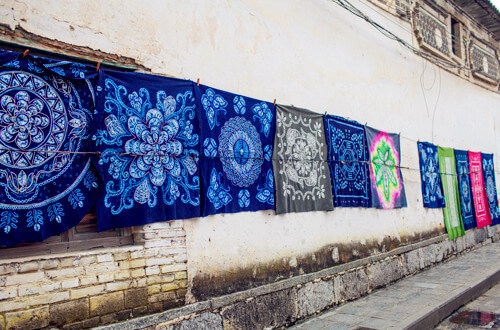
The most common dye is from leaves of indigo (Strobilanthes cusia) which is readily available in southwestern China. To prepare the dye, harvested leaves are ground into a paste. Because indigo dye does not have to be kept hot, it is ideal for wax-resistant batik.
Artisans also treat the cloth with other dyestuffs, such as wild rose and persimmon tree bark, and then pound it with a mallet to achieve the purple colors.
Wax
Beeswax is a natural, renewable resource used for centuries in various applications. It is ideal for creating delicate lines and detailed designs. It’s also effortless to remove from fabric once your design is complete. But beeswax is very expensive.
Paraffin wax is much cheaper than beeswax, so most artisan mix beeswax and paraffin. A small portion of rosin is usually added to the wax, resulting in wax lines.
Tools
The most common tool is a la dao (wax knife) which is made of two pieces of copper or other metal tied to a piece of bamboo or wood. The space between the metal pieces holds the melted wax which slowly passes through the tool as the artisan glides it across the fabric. Varying sizes of la dao are used to apply wax to fabric. The different sizes allow for variety and intricacy in designs.
What Are the General Steps of Chinese Batik?
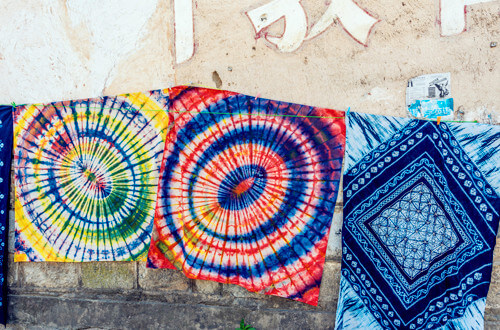
- Step One: The fabric is bleached and washed with grass ash (a source of alkali), and then some cooked taro is kneaded into a paste and smeared on the reverse side of the cloth. After drying, it is smoothed and polished on the table with horns of buffalo.
- Step Two: Selected areas of the fabric are blocked out by brushing melted wax over them.
- Step Three: fter the wax or the special paste is applied, the cloth is wet with water and put into indigo dye. The cloth is left for twenty minutes in the dye, and then taken out for ten minutes to oxidize. These steps would be repeated more than twenty times before the batik is done.
- Step Four: The waxed areas, repelling the dye, remain the original color of the fabric. The operation may be repeated several times and several colors may be used for the bizarre effects.
- Step Five: After the final dyeing, the wax or paste is removed from the fabric with heat or solvents or by scraping. The decorated fabric is then ready for use as intended: for a wall hanging, a room divider, or as material for a variety of garments.
The History of Batik in China
The Chinese people learned to use natural dyes to dye their clothing before 3000 BCE. The method can actually be traced back to the third century BCE. The earliest examples that exist today are from the Eastern Han Dynasty (25-220 CE)—some dyed cloth remnant was discovered at Niya ruins in Minfeng in western China’s Xinjiang area. In the Tang Dynasty (618-907 CE) painting called Daolian Tu (The Picture of Pounding) by Zhang Xuan, we can see that ladies in the painting were in batik clothes. The peak of batik production, however, did not occur until much later, during the 11th through the 14th centuries, or the Song and Yuan Dynasty. From the 15th century, the art declined in areas inhabited by Han people, but it flourished in areas inhabited by the ethnic groups in southwestern China.
Batik Among Ethnic Groups in China
Batik is a traditional craft common among ethnic groups in southwestern China. Using melted wax and a spatula-like tool, people dye the cloth and heat it to get rid of the wax.
Miao (Hmong)
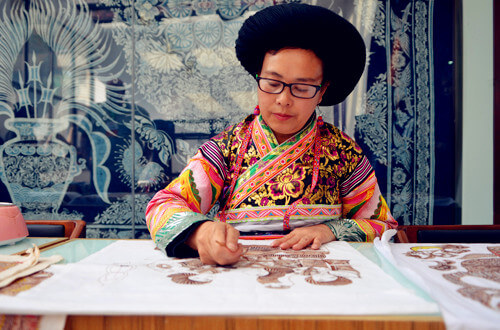
Miao is one of the oldest ethnic groups in China. They were known as Hmong in Vietnam, Laos, and Thailand. Batik is an integral part of their culture and history. According to legend, a wise and beautiful Miao girl, who was not satisfied with her plain colored dress, had been thinking about how to put some flower patterns onto her skirts. One day, she nodded off while she was looking at flowers. In a dream, a fairy maiden led her to a big garden. Fascinated by the beautiful flowers, the young woman did not realize that a lot of bees had rested on her floral-patterned skirt. When she woke up, she realized that it was a dream. She looked down at her skirt, those bees had just flown away from the flowers, and left dots of honey and wax on the skirt, making her skirt ugly looking. So she decided to wash the skirt. To her surprise, the marks turned into white flowers after she washed her skirt with boiling water. Immediately she got some bees wax, melted it, and using a stick to dip into the melted wax, drew some wax patterns on a white cloth, and dropped the cloth into the blue dying jar. Finally, she used boiling water to get rid of the wax. Various beautiful white flowers appeared on the cloth. This is the origin of batik. She taught this method to other women in the village. Without a written language, the Miao ethnic group used to record their history and culture in the batik and embroidery on their clothing. It was a common skill for every Miao woman passed down from mother to daughter.
Almost all the Miao decorate hemp and cotton by applying hot wax then dipping the cloth in an indigo dye. The cloth is then used for skirts, panels on jackets, aprons, and baby carriers. The main motifs of Miao batik are butterflies, fish, birds, centipedes, and dragons.
Danzhai County, in southeastern Guizhou, is a major cradle of the Miao ethnic group's batik craft. Bees wax melting, pattern drawing, indigo dyeing, and fabric boiling are the main procedures of making batik by local people.
Gejia
The Gejia, according to legend, are the direct descendants of Houyi, a legendary hero about whom a story is told where he shot nine scorching suns, leaving only the tenth one, in order to salvage his people. The government has officially classified them as a subgroup of the Miao, and the Gejia people consider themselves a separate ethnic group with their own. They wear distinctive clothes and are renowned for their batiks. Matang village near Kaili is best place to see and experience their batik arts. At the entrance to the village, the Yang Ying Waxing and Embroidery Workshop serves as the teaching center and museum of batik and embroidery of the Gejia people, and international and domestic visitors come to see and even take classes to learn batik.
The Gejia people in Matang use ash and rice wine as assists in their dye vats. The soil near Matang is not conducive to growing indigo, so they buy it as a paste in the markets in Kaili City.
Buyi
Buyi people, also known as Bouyei people, mainly lived in Guizhou province, as well as in parts of Yunnan and Sichuan provinces in southwestern China. Their population is about 3.5 million. The Buyi People are mainly engaged in agriculture. They are skilled in arts and crafts. Their colorful and beautifully patterned batik dates far back to ancient times.
Most of the Buyi batik is totem patterns, with sun patterns, cloud and thunder patterns, copper drum patterns, and symmetry copper. Batik fabrics are often used as dresses, waistbands, bed sheets, back fans, eaves, shoulder bags, hats, and fashion.
The Zhenning Buyi and Miao Autonomous County in southwestern Guizhou is dubbed as the “land of batik “, and the batik produced here were already famous in China in the 11th century. Incidentally, the Huangguoshu Waterfall of the area is the tallest waterfall in Asia at 77.8m (255ft) high and 101m (331ft) wide.

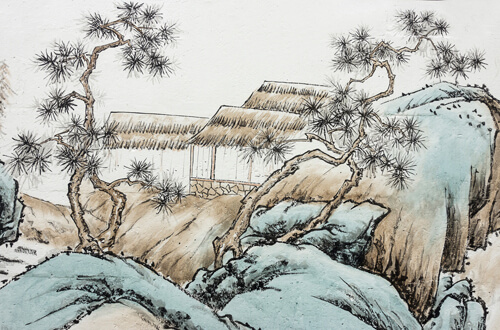 Chinese Painting
Chinese Painting 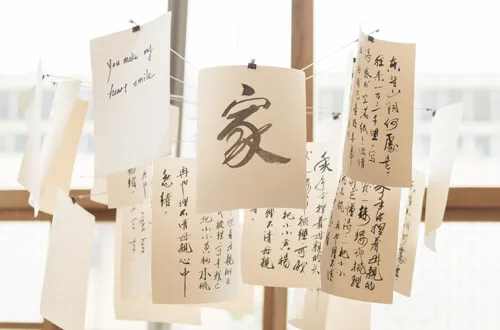 Chinese Calligraphy
Chinese Calligraphy 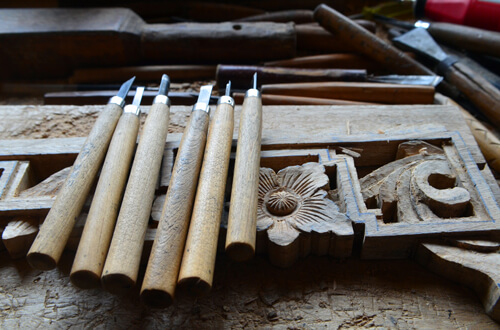 Chinese Woodcarving Art
Chinese Woodcarving Art 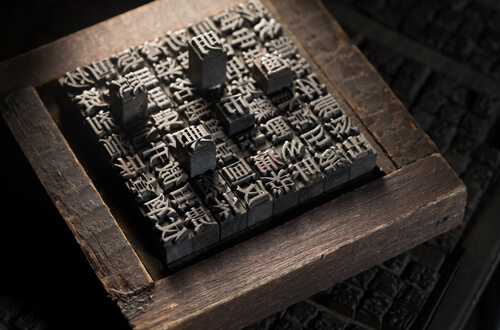 The Evolution of Chinese Characters
The Evolution of Chinese Characters